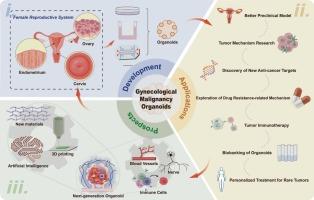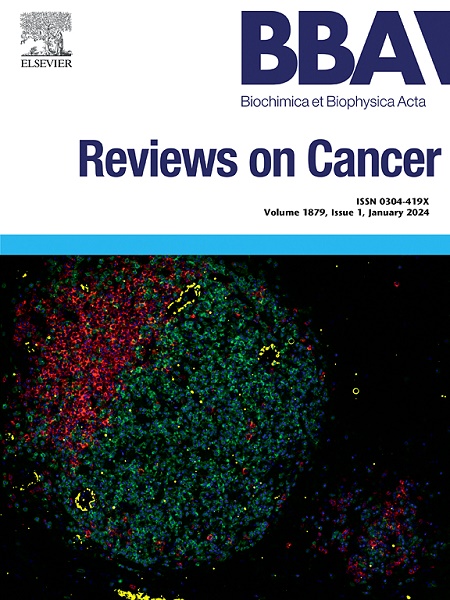妇科恶性肿瘤类器官:个性化医疗的游戏规则改变者
IF 9.7
1区 医学
Q1 BIOCHEMISTRY & MOLECULAR BIOLOGY
Biochimica et biophysica acta. Reviews on cancer
Pub Date : 2025-08-03
DOI:10.1016/j.bbcan.2025.189405
引用次数: 0
摘要
近年来,妇科恶性肿瘤的发病率逐年上升,对妇女健康构成严重威胁。从历史上看,妇科癌症的发生和发展主要是通过细胞系和动物模型来研究的。然而,这些模型往往不能准确反映肿瘤特征,因为在长期培养过程中经常发生基因突变。此外,复杂的肿瘤微环境难以复制。因此,这些模型在将研究成果转化为临床应用方面存在局限性。类器官成功地保留了原发肿瘤的关键特征,包括组织学结构、基因组景观、表达谱和肿瘤内异质性。它们为这些挑战提供了新的解决方案,并已有效地应用于药物开发和个性化治疗。本文综述了几种常见的妇科恶性肿瘤类器官培养系统。讨论了类器官的最新技术及其在妇科肿瘤中的应用。尽管存在局限性,但类器官是理想的临床前模型和肿瘤研究的有前途的平台。本文章由计算机程序翻译,如有差异,请以英文原文为准。

Gynecological malignancy organoids: A game changer for personalized medicine
Recently, the incidence of gynecological malignancies has increased annually, posing a serious threat to women's health. Historically, the emergence and progression of gynecological cancers have primarily been studied using cell lines and animal models. However, these models often fail to accurately reflect tumor characteristics because genetic mutations frequently occur during long-term cultivation. Also, the complex tumor microenvironment is difficult to replicate. Consequently, these models have limitations in translating research findings into clinical applications. Organoids successfully retain key characteristics of primary tumors, including histological structure, genomic landscape, expression profiles, and intratumor heterogeneity. They provide new solutions to these challenges and have been effectively applied in drug development and personalized therapy. This review describes several common culture systems for organoids of gynecological malignancies. It discusses the latest technologies related to organoids and their applications in gynecological oncology. Despite limitations, organoids are ideal preclinical models and a promising platform for tumor research.
求助全文
通过发布文献求助,成功后即可免费获取论文全文。
去求助
来源期刊

Biochimica et biophysica acta. Reviews on cancer
医学-生化与分子生物学
CiteScore
17.20
自引率
0.00%
发文量
138
审稿时长
33 days
期刊介绍:
Biochimica et Biophysica Acta (BBA) - Reviews on Cancer encompasses the entirety of cancer biology and biochemistry, emphasizing oncogenes and tumor suppressor genes, growth-related cell cycle control signaling, carcinogenesis mechanisms, cell transformation, immunologic control mechanisms, genetics of human (mammalian) cancer, control of cell proliferation, genetic and molecular control of organismic development, rational anti-tumor drug design. It publishes mini-reviews and full reviews.
 求助内容:
求助内容: 应助结果提醒方式:
应助结果提醒方式:


